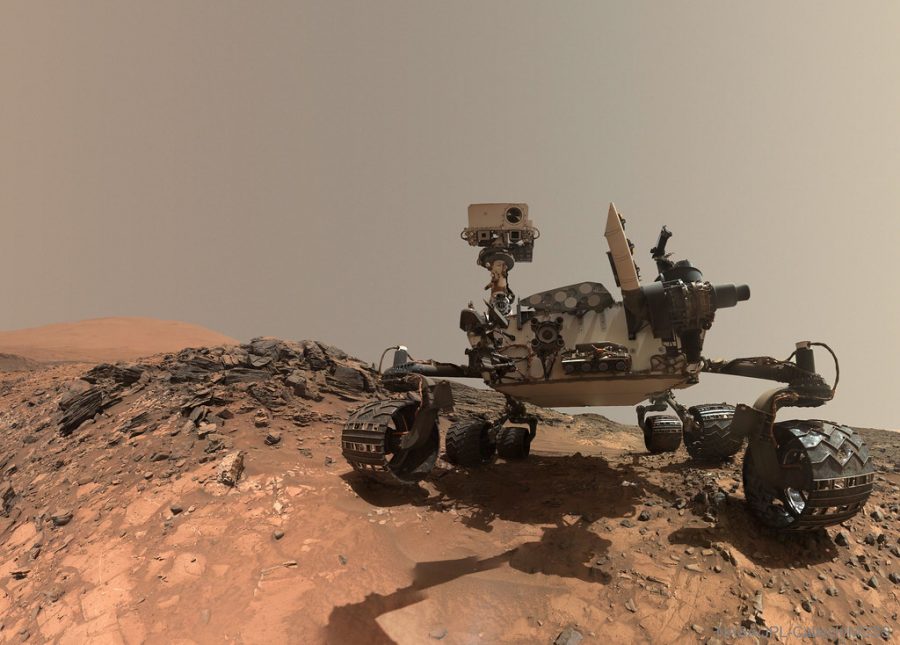Curiosity Rover
“Curiosity Rover Takes Selfie on Mars” by NASA’s Marshall Space Flight Center is licensed under CC BY-NC 2.0
The Curiosity rover is a rover, funded and built by NASA scientists and engineers. It is the longest-lasting rover ever sent to Mars. As of December 16, 2020, Curiosity has been on the planet Mars for 2973 sols (3054 total days; 8 years, 132 days) since landing on August 5, 2012. Curiosity was actually launched on November 26, 2011! It took 253 days for the spacecraft carrying Curiosity to reach its destination witch was the Gale crater located in the northwestern part of the Aeolis quadrangle. The spacecraft that took this rover to Mars is called the Atlas V-451. The curiosity rover explores the Gale Crater and takes soil, rock, and air samples so that NASA scientists can observe and take notes on how Mars is built and how it functions. By looking at pictures, Curiosity does not look very large but in reality, it is about 10 feet long, 9 feet wide, and 7 feet tall. Not including the rover’s arm which is another 7 feet. It carries a total of 10 scientific instruments with 17 cameras and a laser to vaporize and study small objects. All of these features are crucial to Curiosity’s survival and very helpful to NASA scientists.
Curiosity has some of the biggest scientific material sent to Mars. For this reason, NASA had to design a new landing system for Curiosity. The landing capsule was first descended on a parachute to which only seconds from hitting the ground turned on its rocket boosters to slow it down even more. Then it lowed Curiosity down with a tether. When the rover reached the Martian soil the landing capsule was sent off to crash land a safe distance away. This mission demonstrated that we can land a rather large machine on Mars and that we can only improve it.
The reason that Curiosity is the longest-lasting rover we sent to Mars and the only rover still functional today is because not only does it use solar power is also uses a Radioisotope Power System or an RPS. A Radioisotope Power System provides electricity and heat the can enable a spacecraft, like a rover, to get power beyond the capabilities of solar power. Much like a battery, it is attached to the rover allowing it an additional power source. Also, because the wind and mini tornados blow the sand of the solar panels so that they are still working.
For additional information click here.















